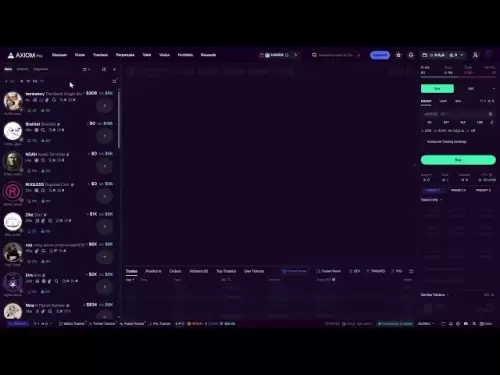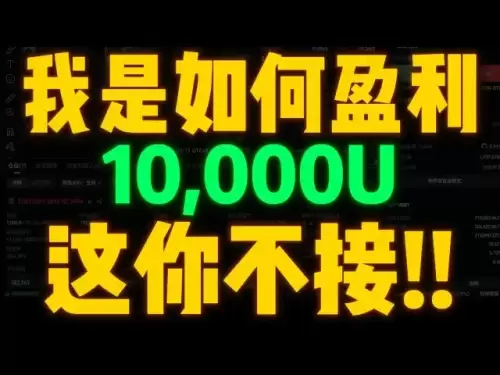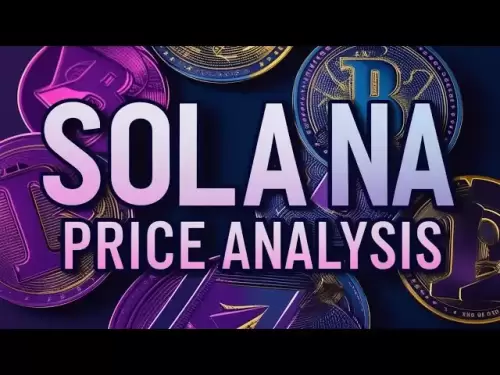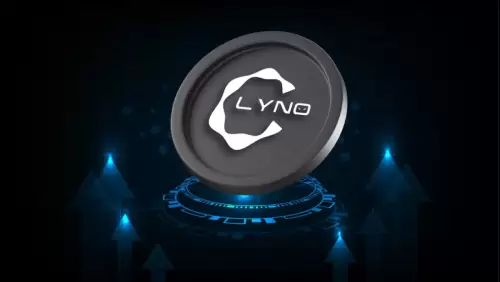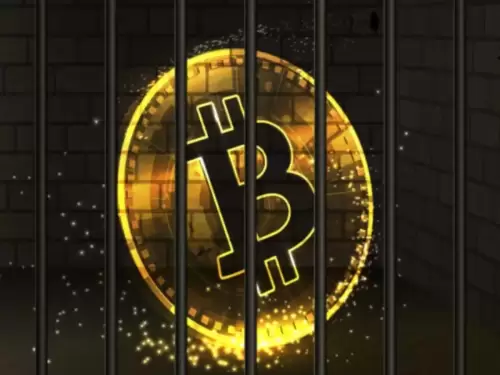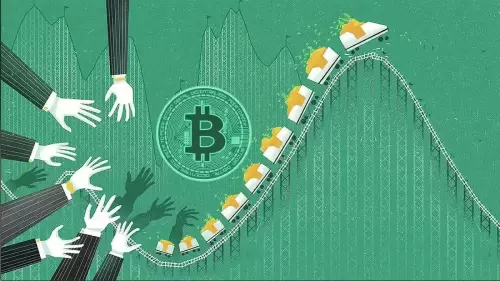 |
|
 |
|
 |
|
 |
|
 |
|
 |
|
 |
|
 |
|
 |
|
 |
|
 |
|
 |
|
 |
|
 |
|
 |
|
在加密市场中,流动性是国王,但是当资产被锁定,流动性不足以及几个月(甚至数年)距离归属时会发生什么?

In the dynamic realm of crypto markets, liquidity is paramount, but what happens when assets are locked, illiquid, and months (or even years) away from vesting? This is the problem that SecondSwap sets out to solve.
在加密市场的动态领域,流动性至关重要,但是当资产被锁定,流动性不足以及几个月(甚至几年)之遥时,会发生什么呢?这是第二劳斯开发要解决的问题。
Speaking at the Avalanche Summit in London, CCN spoke with Kanny Lee, founder of SecondSwap, to discuss how the new platform is tackling a niche but increasingly relevant challenge: the trading of locked tokens on-chain.
CCN在伦敦的雪崩峰会上发表讲话时,与Secondswap的创始人康妮·李(Kanny Lee)进行了交谈,讨论了新平台如何应对利基市场,但越来越相关的挑战:锁定令牌的交易链链。
Rise of Token Secondary Markets
代币二级市场的上升
“Secondary markets are not a crypto invention,” begins Lee. “They’ve existed in traditional finance for years. People who invested in Facebook before the IPO sold shares through private secondary, or they sold to early employees.”
李说:“二级市场不是加密发明。” “它们已经存在于传统金融中多年了。在IPO通过私人次要出售股票或将其出售给早期员工之前投资于Facebook的人们。”
Now, this concept is being adapted to the blockchain world. Rather than focusing on tokens already in circulation, SecondSwap targets locked or illiquid token allocations—typically held by seed investors, team members, or advisors.
现在,这个概念正在适应区块链世界。第二西浪目标锁定或流动性的代币分配,而不是专注于已经流通的代币,而是由种子投资者,团队成员或顾问持有的。
“Historically, these deals happen over-the-counter with brokers manually matching buyers and sellers. It’s slow, opaque, and often fails,” says Lee.
李说:“从历史上看,这些交易是通过手动与买家和卖家相匹配的经纪人进行的。它很慢,不透明,而且经常失败。”
SecondSwap introduces a tri-party structure where the token foundation plays an active role from the start.
Secondswap引入了三方结构,即令牌基础从一开始就起着积极的作用。
“We get approval from the foundation for each deal, so there’s no last-minute veto after weeks of negotiation. It turns what’s usually a legal gray area into a pre-approved, on-chain process. Foundations retain oversight, while traders get speed and clarity.”
“我们从基金会获得了每笔交易的批准,因此经过数周的谈判,没有最后一刻的否决权。这将通常是合法的灰色区域变成了预先批准的,链的链过程。基金会保留监督,而交易者会获得速度和清晰度。”
Why Avalanche?
为什么要雪崩?
SecondSwap is currently built on Avalanche. Lee cites the protocol’s real-world integrations—from stablecoin-powered ride-hailing payments in Singapore to various partnerships—as a key reason for the choice.
Secondswap目前是建立在雪崩的基础上的。李引用了该协议的现实世界一体化(从新加坡的驱车乘车付款到各种合作伙伴关系)是选择的关键原因。
“Avalanche has shown traction across different sectors, not just DeFi or gaming. They’re also open to experimentation.”
“雪崩表现出了不同领域的吸引力,而不仅仅是Defi或Gaming。它们也对实验开放。”
The integration allows users to buy locked AVAX tokens directly through the platform, which marks a first in the space, according to Lee.
李说,该集成使用户可以直接通过平台购买锁定的avax代币,这标志着该空间中的第一个。
It's Also Awaiting Payloads From Chains Like Solana, Binance Smart Chain, Ethereum, Fantom, and Polygon.
它还正在等待诸如Solana,Binance Smart Chain,以太坊,Fantom和Polygon等连锁店的有效载荷。
Risks and Friction Points
风险和摩擦点
The model isn’t without challenges. Smart contract risk, wallet-based UX friction, and protocol-level security are all in play. Lee, a former cybersecurity specialist, says SecondSwap prioritizes segregation of funds, access controls, and transparent on-chain execution to mitigate these.
该模型并非没有挑战。智能合约风险,基于钱包的UX摩擦和协议级安全性都在起作用。前网络安全专家Lee说,第二阵威优先考虑资金,访问控制和透明的链上执行的隔离以减轻这些作用。
There’s also the potential for market manipulation or wash trading, but according to Lee, that’s harder to pull off on-chain.
也有市场操纵或洗涤交易的潜力,但据李说,这很难扎根。
“It’s easier to trace behavior on decentralized platforms. Tools like Dune Analytics make spoofing patterns more visible.”
“在分散平台上追踪行为更容易。《沙丘分析》这样的工具使欺骗模式更加可见。”
Who’s Buying Locked Tokens?
谁在购买锁定令牌?
One might assume demand is low, but Lee says it’s the opposite.
人们可能会认为需求很低,但李说,情况恰恰相反。
“We have public companies building strategic positions in layer-1 ecosystems,” he reveals.
他透露:“我们有上市公司在第1层生态系统中建立战略立场。”
“It’s like a new version of MicroStrategy, but instead of Bitcoin, they’re stockpiling Solana or Avalanche at a discount.”
“这就像一个新版本的MicroStrategy,但他们不打折比特币,而是以折扣价储存Solana或Avalanche。”
The buying logic? Tokens are already locked. Investors who are bullish on an ecosystem’s long-term prospects can acquire tokens at a lower price without affecting the circulating supply.
购买逻辑?令牌已经被锁定了。对生态系统长期前景的看涨的投资者可以以较低的价格获取代币,而不会影响循环供应。
A Different Way To Participate
参与的另一种方式
Unlike airdrops, which often lead to rapid selloffs, SecondSwap aims for more incentivized ownership. Community members can buy tokens at a discount, but they remain subject to the original lock terms.
与经常导致迅速抛售的气流不同,第二西浪旨在获得更多激励的所有权。社区成员可以以折扣价购买令牌,但他们仍然受到原始锁定条款的约束。
“There’s a difference between getting something for free and buying it at a discount. The latter creates more committed holders.”
“免费获得东西和以折扣价购买之间是有区别的。后者创造了更多坚定的持有人。”
Fractional sales are also possible. Users don’t need to sell an entire allocation, just a portion, adding flexibility.
分数销售也是可能的。用户不需要出售整个分配,只需增加一部分即可增加灵活性。
Regulatory Node
监管节点
SecondSwap avoids direct custody or exchange roles. Instead, it integrates with KYC providers and relies on token foundations to define eligibility.
第二劳作避免了直接监护或交换角色。取而代之的是,它与KYC提供商集成在一起,并依靠令牌基础来定义资格。
“We’re not bypassing restrictions; we’re enforcing them. Whatever a SAFT says, we follow.”
“我们没有绕过限制;我们正在执行它们。无论如何,我们都会跟随。”
This makes SecondSwap more of a facilitator than an exchange—a design choice aimed at reducing compliance risk.
这使得第二劳动更像是促进者,而不是交流,这是一种旨在降低合规风险的设计选择。
Is This the Start of a New Liquidity Model?
这是新的流动性模型的开始吗?
As of 2025, more than $37 billion worth of tokens are locked across the crypto ecosystem.
截至2025年,在加密生态系统中锁定了价值超过370亿美元的代币。
Lee believes platforms like SecondSwap could act as “pressure relief valves,” helping move tokens into stronger hands without quickly flooding markets.
Lee认为,像Secondswap这样的平台可以充当“压力释放阀”,有助于将令牌转移到更强的手中而无需快速洪水市场。
Still, he acknowledges the biggest challenge isn’t legal or technical—it’s speed.
尽管如此,他仍然承认最大的挑战不是合法的或技术的,这是速度。
“Foundations keep asking us to move faster. They see the need; they just want it now.”
“基金会一直要求我们更快地移动。他们看到了需求;他们现在只想要它。”
The Bigger Picture
更大的图片
Whether SecondSwap becomes a standard tool or remains a niche solution depends on how the broader market evolves. But it’s clear the demand for smarter token liquidity is increasing as crypto matures beyond hype cycles and toward longer-term capital strategies.
第二劳动是成为标准工具还是仍然是利基解决方案取决于更广泛的市场的发展方式。但是很明显,随着加密货币越来越多的炒作周期和长期资本策略的成熟,对更智能令牌流动性的需求正在增加。
As Lee says, “We’re not inventing a new idea. We’re adapting a proven one to the world of crypto—and trying to do it right.”
正如Lee所说:“我们不是发明一个新想法。我们正在将一个经过验证的概念改编成Crypto世界,并试图正确地做到这一点。”
免责声明:info@kdj.com
所提供的信息并非交易建议。根据本文提供的信息进行的任何投资,kdj.com不承担任何责任。加密货币具有高波动性,强烈建议您深入研究后,谨慎投资!
如您认为本网站上使用的内容侵犯了您的版权,请立即联系我们(info@kdj.com),我们将及时删除。
-

- Lyno令牌预售:Defi中的AI套利革命
- 2025-07-31 04:01:35
- Lyno推出了代币预售,并提供了AI驱动的跨链套利协议的早期访问权限。这是下一个BNB吗?
-

-

- AML比特币欺诈:在大苹果和其他地区打击加密犯罪
- 2025-07-31 03:48:54
- AML比特币案强调了加密业务的日益审查。监管机构正在打击利用数字资产的分散性质的骗局。
-

- Cardano(ADA)在2025年:导航加密货币的未来
- 2025-07-31 02:00:52
- Cardano(ADA)会突破阻力达到$ 4,还是降至0.51美元?这是2025年Cardano前景的细分。
-

-

- 比特币的看涨前景:加密量值对未来市场冷却的见解
- 2025-07-31 01:54:08
- CryptoQuant的分析表明,由于期货市场的冷却,比特币的集会处于坚实的基础上,表明有机需求和投机压力降低。
-

-

-

- 模因硬币,投资回报率和猫硬币:加密货币中的purr-fect风暴?
- 2025-07-31 01:15:00
- 探索模因硬币的热潮,ROI潜力以及以猫主题的加密货币的兴起,例如西蒙的猫和拖钓猫。



















